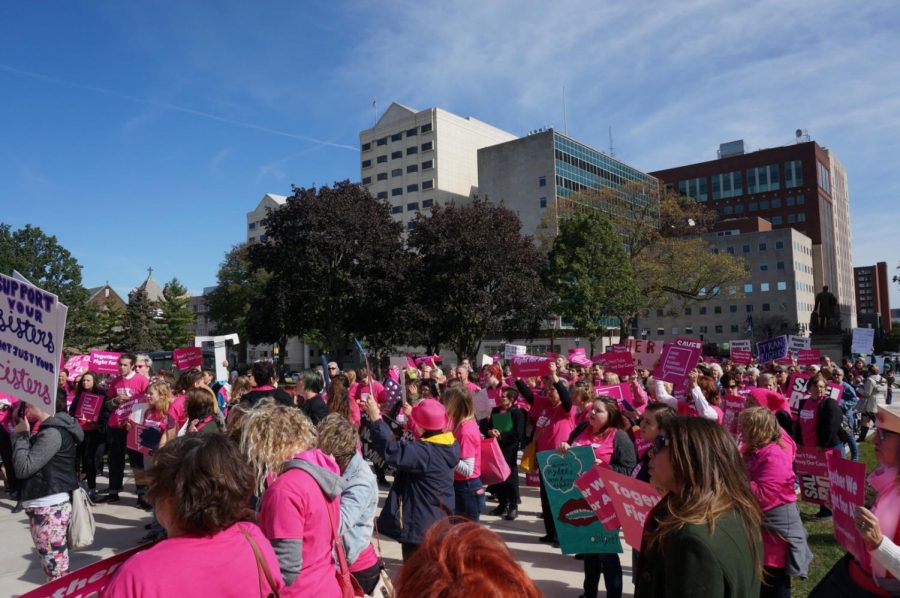Inequality Within Equality
Hundreds of women and men march at the Day For Action in Lansing, Michigan. The men and women celebrate coming together after Rebecca Warren gives a speech.
My dad came back from Iran a few months ago and got me a t-shirt with a Rumi poem on it. I laid out the shirt on my bed, rays of sun from the window shining on the elegant Persian words. The very next day, I wore the shirt to school, like a badge of honor. I felt so proud. I felt proud even when a white woman dragged her child away from me on the street quickly after looking at my shirt. Even when another white woman at a coffee shop gave me the second-dirtiest look I have ever received, the first being a glare from airport security with my very Middle Eastern-looking father. But it’s okay, because she had a Planned Parenthood pin on her bag.
White feminism has always been present in American culture and it is time for it to stop. In 1866, Susan B. Anthony, the “feminist heroine” we learn about in school, said, “I will cut off this right arm of mine before I will ever work or demand the ballot for the Negro and not the woman.” The women’s suffrage movement was tainted with racism. The two “mothers of feminism,” Elizabeth Cady Stanton and Susan B. Anthony, were so outraged by the 15th Amendment that they actively worked and collaborated with white supremacists to advance their cause. Although these women believed that “men and women are created equal,” they excluded people of color from this equality, influencing the generations of white feminism to follow them.
Some might challenge my argument and say that times have changed, but unfortunately, in 2017, the racial divide is still present. White women helped elect Trump. In the most recent presidential election, 53 percent of white women voted for Trump, outperforming Clinton. Within that demographic, 51 percent of white women with college degrees voted for Clinton, while 62 percent of women without one voted for Trump. These women chose to overlook Trump’s blatant racism and sexism to support the belligerence rather than people of color, or more specifically, women of color. Elle magazine conducted interviews with a handful of female Trump supporters after the election, and they claimed that they were “absolutely not racist,” and they really just cared about the “economy” and “get[ting] a good job.”
During the Women’s Marches on Jan. 21 2017, many women of color felt offended and excluded. “Women of color were often asked to not rock the boat with what were seen as side issues like racial equality,” said Grace Hong, professor of Asian-American and Gender Studies at UCLA.
Modern day “feminist icons” like Amy Schumer and Lena Dunham are examples of white feminism still present today. Schumer has made many offensive and racist remarks toward Hispanics and African-Americans. In her stand-up routines, she’s said “Nothing works 100 percent of the time, except Mexicans,” and also told an audience that Latino men are rapists. Schumer’s racist jokes have only white Americans laughing. Dunham is another white liberal feminist whose ‘hipster racism’ is often considered benign due to her outspoken feminist persona. Most recently, Dunham has been accused of being racist, calling Black former colleague, Zinzi Clemmons, a “liar” when speaking out on sexual assault. These automatic assumptions that women of color are lying are unacceptable in today’s society.
Feminism is defined as “the belief that men and women should have equal rights and opportunities.” This definition should not be exclusive to white women. As a young woman of color, I want the same opportunities as other women.








